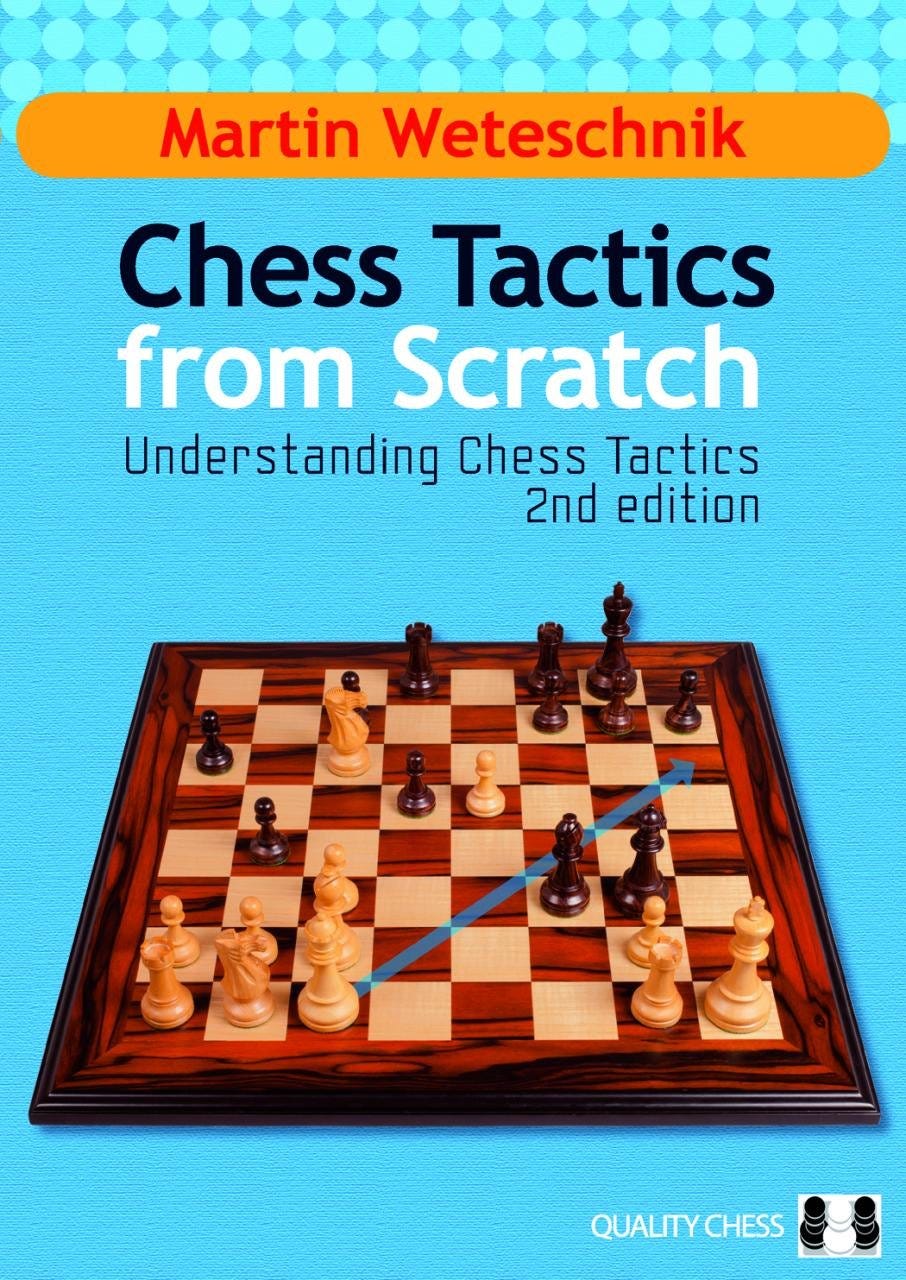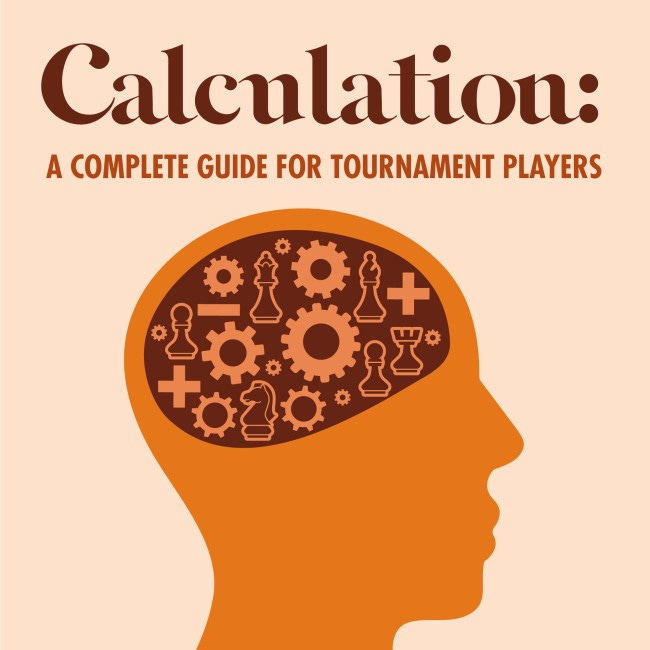Book Review: Chess Tactics from Scratch by Martin Weteschnik
A modern classic, and a shoo-in for intermediate-strength players.
Chess Tactics From Scratch by Martin Weteschnik is a book about chess tactics. It’s less of a workbook (though this second edition of Understanding Chess Tactics comes with 300 problems rated by theme and difficulty in the latter half), and more of an explanation behind the mechanics that make chess tactics work. This can sound elementary and trivial to some, especially those club-level players who have a pretty decent grasp on the basics of tactical chess. But Weteschnik shows by examples from club players and world champions alike that even many of the world’s greatest players have been overcome by relatively short combinations based on the exploitation of various motifs present in any given position. This is a book that fits squarely in the intermediate-to-expert category of difficulty.
When it comes to reading about or studying tactics especially with relation to calculation, there are a few different methods that are commonly suggested. For instance, CCT — Checks, Captures, Threats — and all of its variants. There is also Azel Chua’s Hamburger Method as advocated for in his excellent Chessable course Calculation: A Complete Guide for Tournament Players.
Chessable Course Review: Calculation: A Complete Guide for Tournament Players
Note: I originally a review on Chessable over 2 years ago. This will be an updated version of that review. You can purchase the course here.
Basically every method of calculation also relies on fundamental pattern recognition — things which you subconsciously notice in the position and that direct your gaze to where you believe the action will be. Rudimentary tactics are the backbone of strategic play, so sometimes you find you can make a move to improve a piece that only appears to place that piece in danger, because stopping that move or reacting to it leads to something tactical in your favor. It’s no surprise that players who wish to become strategic titans must also be tactical sharpshooters — they simply have to know the basics of chess tactics down to a T, to become stronger players.
That’s where I think Chess Tactics from Scratch can really help a player to reach above their current level. Weteschnik goes as far as to say that if you internalize the subjects in his book, you’ll immediately play a class above. That may sound like a bold claim, but reading this book and its explanations and poring over all the neat hand-picked examples he provides might convince you he’s right. Then you just have to take the lessons you learned to the bank (or to the club, as it were) and cash in with some tactics of your own.
Weteschnik’s selection of chapters comes off as a bit eclectic. The first one is “Becoming Familiar with the Pieces!” and if this were the only chapter you read, you could be forgiven for mistaking this as a book for beginners. But soon after, Weteschnik gets into the meat of what makes a chess tactic, and the magic begins to happen — the way the material is arranged is peculiar but has a certain method to its madness.
Then, comes the “pin” tactic — and after, the “discovered attack” (and not something more visually similar, such as a “skewer”). Why? It’s simple, as Weteschnik puts it: “The discovered attack has a strong schematic resemblance to the pin”, and later explains how one can transform into the other. The only difference between the two tactics is an additional target — the square to which the discoverer moves to reveal an attack by the piece whose line of sight it was blocking. His first example is a typical discovered attack as a bishop moves to put a king in check, while simultaneously discovering the attack of the rook behind it against an enemy queen.
This is what the from Scratch part of the book is all about — giving you the fundamental elements of the tactic as points of consideration in any given position so you can better find the tactical ideas, and giving you a more basic view of what happens during a chess tactic. Importantly, Weteschnik stresses the need to exercise one’s imagination. Imagine what could happen if you could move a king onto the same line as its queen in order to pin the queen or skewer the king and win material. This can help you find ways to move pieces that seem impossible: For instance, pushing a pawn to a square that is defended less times than it is attacked, or using a pin in order to help a Knight or a Rook move diagonally to its destination on threat of worse consequences if impeded. Rather than stifle creativity, thinking of the very basic elements of a chess tactic this way helps to produce entirely new possibilities that one may have never realized before.
Chess Tactics from Scratch is about giving you the fundamental elements of a chess tactic and breaking them down into its basic elements so you can find or create combinations for yourself over the board.
Each chapter contains something to learn from if you’ve never read this book before. In particular, “The Reloader” was revolutionary for finally naming a tactical motif seen in master play but not quite categorized effectively before. Also, I enjoyed the chapter on “Intermediate Moves” — but even more instructive is its first title: “Gain of Tempo”. Stuff like this helps reframe tactics — sometimes a tactic is less about what the piece is doing and more about what it accomplishes. This is exactly why intermezzos are so dangerous — they give more time for something else to occur.
The penultimate chapter is entitled “Status Examination”, and it’s here that Weteschnik really ties the preceding chapters together. The reader has just learned of many motifs through many beautiful examples — but how do you start to find these in your own game? How do you uncork the champagne of a tactical flourish like Tal or Larsen or Alekhine? That’s where this part comes in handy. All-in-all Weteschnik finds the beauty of chess tactics in the unexpected, and if you take what he says to heart, you will start surprising your own opponents too. This is the book’s method, taught after you’ve been given all the building blocks to be successful in finding strong moves.
The final chapter, on “Candidate Moves”, is a bit of an after-thought, but still contains some instructive examples. Then comes a 300-test position test that comprises the final third of the book, in case you needed somewhere to work on what you learned, sorted by theme and difficulty. Both of these last chapters were nice but unnecessary (in fact they were both added for this second edition of Understanding Chess Tactics). Nevertheless, I can’t mark down a book for having too many good things in it. It’s still worth the cost of admission if you skip these last parts of the book.
Chess Tactics from Scratch is designed as a book you can read without a chessboard. There are many diagrams, and usually multiple ones for longer combinations. But every example is well-explained and sometimes accompanied with Weteschnik’s dry humor. This is a bedside reader that doesn’t require a chessboard or paper-and-pen until the “Test Positions” chapter. But remember you can take what you’ve learned to any other tactics book and be better off for it.
Because it’s written by a player who did a lot of improvement in his riper years as an adult, the explanations will resonate with many adults trying to get to the next level in their chess journey. It deconstructs the chess tactic into its disparate parts, and then puts it back together with a new way of understanding that can carry you far, if you let it. And as far as chess tactics books and collections go, this one fits a particular niche that not many others do. When you feel like you don’t know how to find good moves in particular positions in most of your games, but you’re at a level where the skill gains have slowed down, that’s a good time to consider picking up this book. If you’re ~1200 rated on chess.com or USCF, this might be difficult to work through the first time, but I think any player rated ~1500 might as well consider this book a must-have.




What a magnificent review.. thank you so much. Actually I was thinking of this book to be added to my list, and now it’s confirmed. Much appreciated!